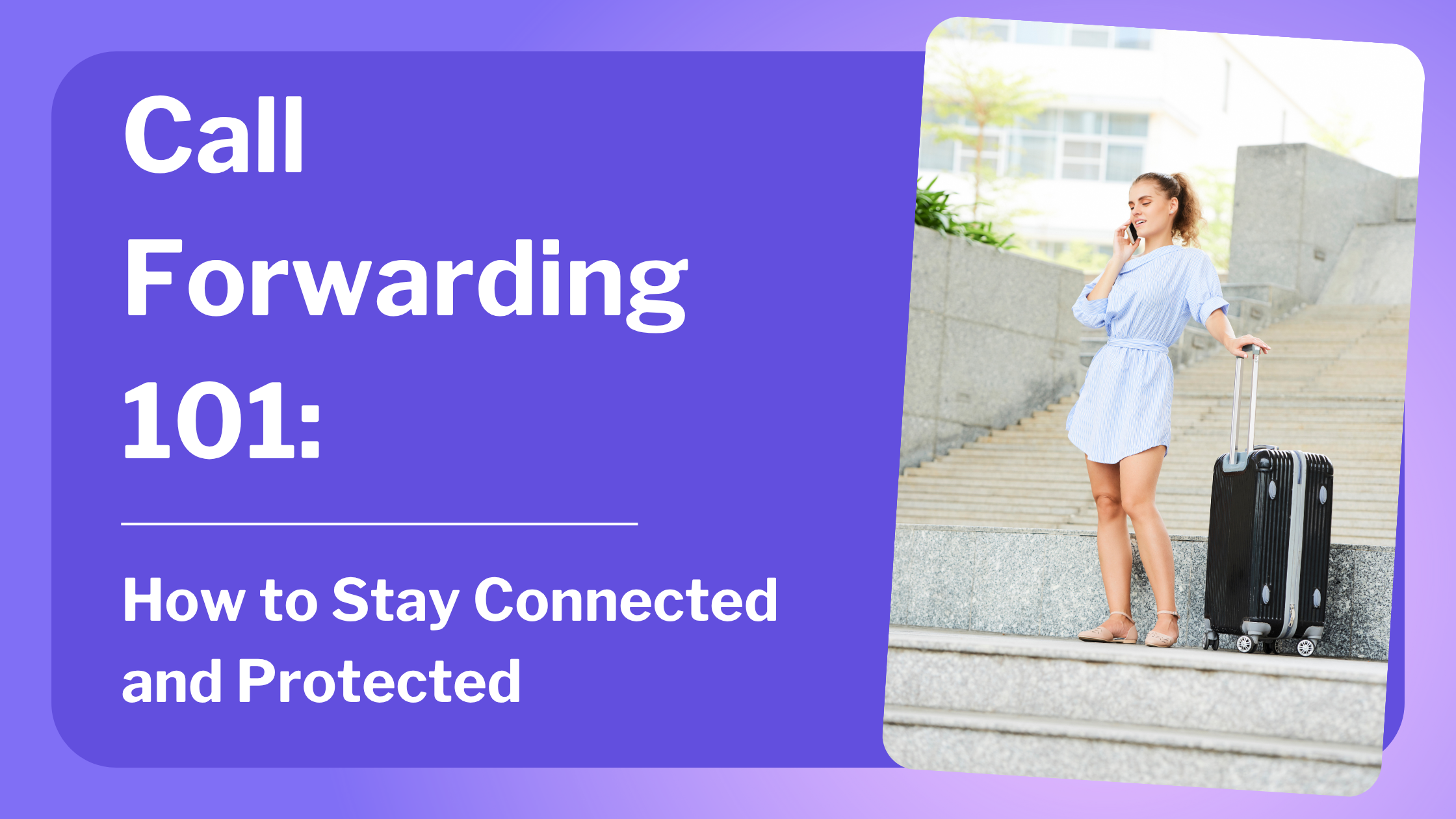
Published 11/23/25
Whether you’re traveling, away from your main phone, or just want calls to ring somewhere else, call forwarding is a simple but powerful tool. By redirecting your incoming calls to another number, you stay reachable without handing out your primary line. At iCaughtYou, we believe in giving you control and clarity over your phone experience. So let's dive into how call forwarding works, when it’s useful, and exactly how to set it up (and cancel it) with major U.S. carriers.
What is Call Forwarding and Why Use It?
Call forwarding is a service provided by phone carriers that reroutes incoming calls on your number to a different number you choose. The forwarded calls then ring at that destination rather than on your original phone. It’s available on many cell phones, landlines, and VoIP services. Among the reasons you might use it:
You might be in a situation where your primary phone is unreachable (dead battery, no signal, on silent) and you still want important calls answered.
You might have two numbers (for example one personal, one business) and want all calls to go to one central line.
You might temporarily forward calls to another device (for travel or battery issues).
You may want a call‑screening layer or simply not give out your main number, so you would forward to a “proxy” or secondary contact.
You’re using a call intelligence tool like iCaughtYou to unmask “No Caller ID”, record suspicious calls, or blacklist harassers. In these cases, forwarding your calls through a secure routing number allows iCaughtYou to act as a smart filter. It gives you control, documentation, and protection without needing to manually screen every call yourself.
Because call forwarding essentially hands off your call routing, it gives you flexibility, but also requires awareness of costs and settings.
Types of Call Forwarding
Not all forwarding is created equal. Common varieties include:
Unconditional (Always) Forwarding: Every incoming call gets forwarded.
Conditional Forwarding: Forwarding happens only under certain conditions: when the line is busy, when you don’t answer, when the phone is unreachable (out of service or off).
Selective or Only for Certain Numbers: Some carriers allow you to forward only calls from certain numbers or under certain rules.
How to Set Up Call Forwarding: Carrier Codes & Examples
Here are some typical activation/deactivation codes for major U.S. carriers. Note: Always check with your carrier or your plan, because some specific plan types might differ or incur charges.
Phone provider | Action | Code / Format |
|---|---|---|
Activate All Calls Forwarding | 72 + 10-digit number (e.g., 72 5551234567) | |
Deactivate | *73 | |
Always Forward | **21 + 10-digit number | |
Cancel Always Forward | ##21# or #21# (depends on carrier) | |
No answer | **61*1 + PhoneNumber + # (T-Mobile specific) | |
Unreachable | **62*1 + PhoneNumber + # | |
Busy | ||
Forward All Calls | *72 + 10-digit number | |
No Answer | *71 + number | |
Unreachable | *92 + number | |
Busy | *90 + number | |
Landlines / Other Carriers | Forward | *72 |
Deactivate | *73 | |
Conditional Codes | May include 71, 92, etc. - varies by provider |
Important Tips & Considerations
Fees & plan implications: Some carriers may treat forwarded calls as “redirected” and might charge at standard rates (especially if you forward to an international or non‑local number). Always check with your plan.
Voicemail & text forwarding: Call forwarding usually applies to voice calls only, texts and voicemail might follow different rules. For instance, many carriers note that forwarding does not include SMS by default.
Number formatting matters: Always include the full 10‑digit number (area code + prefix + line) when entering the forwarding destination. Missing digits may cause activation to fail.
Unintended forwarding risks: If you forget to disable forwarding, your calls might go somewhere you didn't intend (e.g., old number, vacation message).
Check confirmation: After dialing the code and number, wait for a confirmation tone or announcement before hanging up.
Smartphone settings alternative: Many modern smartphones support call forwarding via Settings → Phone → Call Forwarding (especially iOS) rather than manual codes. (With Android, users can manually dial in the conditional call forwarding number.)
Test it: After setting up, use a second phone to call your number and verify the call rings at the forwarding destination.
Security alerts: Some apps or services require each call to come directly to the original line for security (two‑factor calls, banking alerts)—forwarding might break those.
Conclusion
Call forwarding is a straightforward yet powerful feature that puts you in control of where your incoming calls go. Whether you’re using it for travel, business, or just peace of mind, knowing the correct activation and deactivation codes for your carrier means you won’t be caught off guard.
At iCaughtYou, our goal is to help you navigate your calling environment with clarity, confidence, and protection. We believe it’s important that you decide where, when, and how your phone rings, not someone else’s agenda. Whenever you plan to forward calls, double‑check the carrier codes above, test the forwarding, and keep your number on your terms.